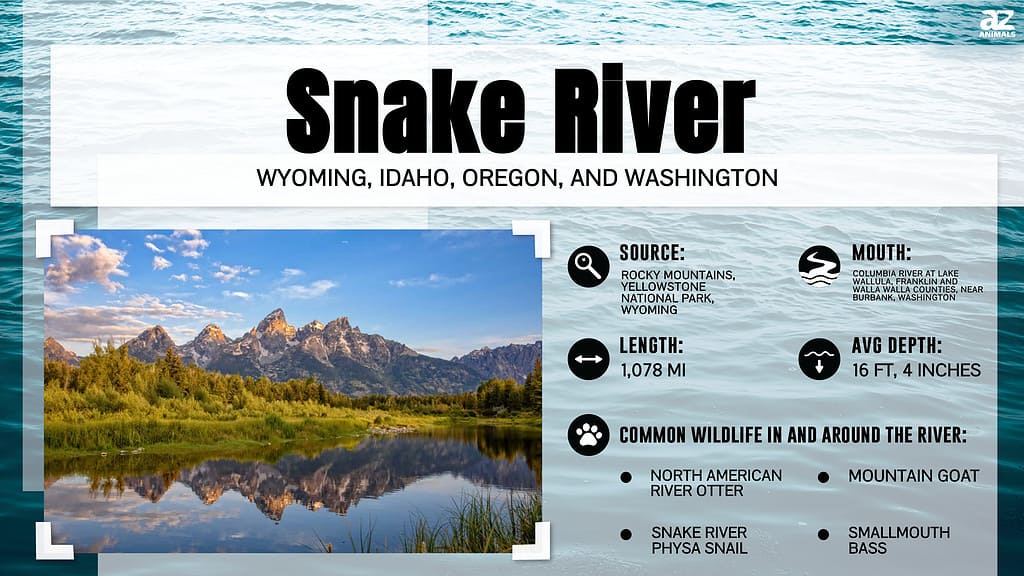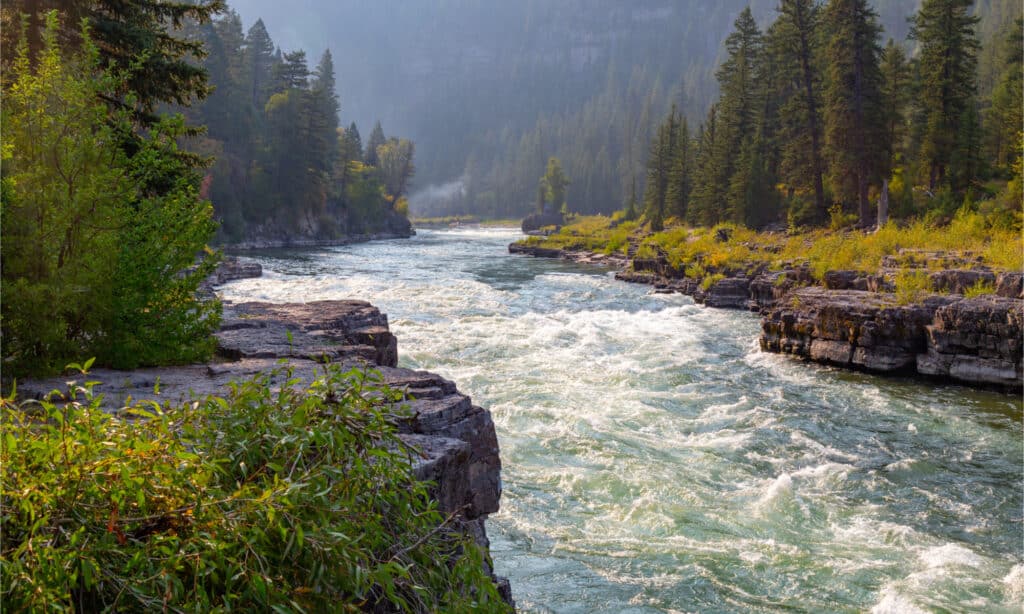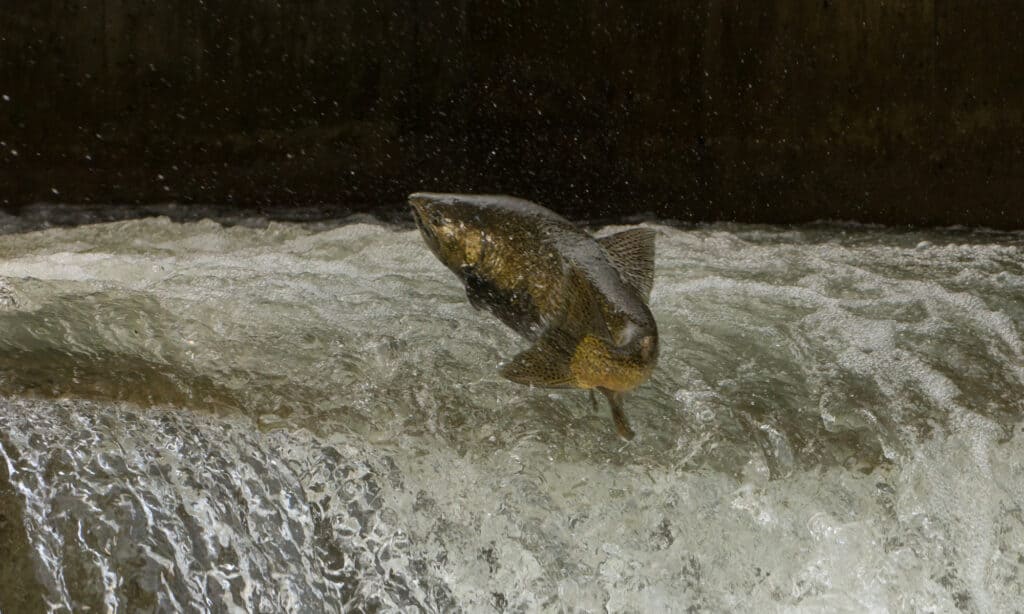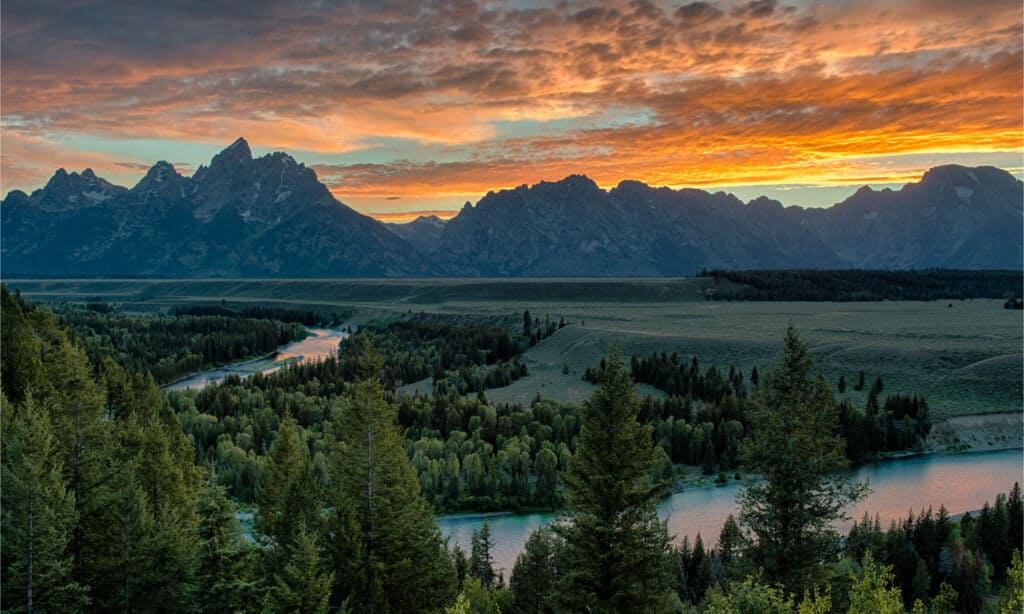
Rivers can be viewed as the “veins” of nature, allowing for transportation, water, and resources for regions not near the coast. In the United States, these rivers are essential for native people groups, fish populations, and water for huge populations. Unfortunately, historic droughts, climate change, and human construction threaten many of these rivers and what they provide for the people and creatures who depend on them. Let’s look at one of the most endangered rivers in the country: the Snake River.
What does it mean for a river to be endangered?

Various rivers are analyzed each year and ranked according to certain criteria.
©Barry Bjork/Shutterstock.com
Each year, The America’s Most Endangered Rivers report is released, giving us valuable insight into the current state of the country’s rivers. As you can probably imagine, things aren’t looking great for 2022. The goal of the report is to bring information, resources, and solutions to the people who can make decisions to save these endangered rivers. What makes a river a potential candidate to be listed as “endangered?” Here are the three criteria that American Rivers uses:
1. A major decision (that the public can help influence) in the coming year on the proposed action;
2. The significance of the river to human and natural communities;
3. The magnitude of the threat to the river and associated communities, especially in light of a changing climate
American Rivers
With that criteria, they select and report on 10 rivers that are the most endangered. Additionally, they will present alternatives to current proposals that could be harmful. This year, the Snake River is listed as the second most endangered river in the country.
Where is the Snake River?

The Snake River begins in Wyoming and flows toward the Pacific Ocean.
©CSNafzger/Shutterstock.com
The Snake River is one of the major rivers of the greater Pacific Northwest (PNW) region of the United States. It’s 1,078 miles long and is the largest tributary of the Columbia River. The Columbia River and Basin is the largest North American river that empties into the Pacific Ocean, showing just how important it is.
The Snake River begins in Wyoming in Yellowstone National Park. The river then flows through Idaho, Oregon, Washington and empties into the Pacific. Part of what makes the river unique is its geological history. It’s known as one of the most geologically diverse rivers in America as it cuts through mountains, plains, and more.
Why is the Snake River endangered?

Many of the problems occurring on the Snake River are due to salmon populations.
©Evan Linnell/Shutterstock.com
There are a few key elements that place the Snake River on the Endangered list:
- Tribal rights and culture
- Salmon runs
- Rural communities
- Local economies
Generally, scientists have predicted that salmon and steelhead, whose populations are dwindling, will eventually go extinct unless four dams in the lower portion of the river are removed to restore the river to its natural state. Let’s take a closer look at what’s driving the Snake River towards extinction.
Tribal rights and culture
Native Americans have lived along the shores of the Snake River for over 11,000 years, since right around the end of the last Ice Age. Salmon swimming upstream from the ocean provided an incredibly rich food source as they spawned by the millions along the waters. When the first contact with colonists and Native Americans happened, the dominant tribes in the region were the Nez Perce and the Shoshone.
Even today, tribal groups along the river on tribal lands rely on salmon as an essential part of survival. Damming across the river and the subsequent loss of salmon is a direct infringement on various treaties between the US Government and Tribal Nations. Damming submerged between 600 and 700 tribal sites, including hunting plains, graveyards, and gathering places.
Salmon runs
Salmon is one of the dominant economic and dietary forces in the PNW. The Columbia River and its tributaries, including the Snake River, are essential spawning grounds for Chinook salmon. As salmon spawn, they travel upstream.
Currently, four dams that were built along the lower Snake River have caused wild salmon runs to plummet by more than 90% in many regions. Thirteen runs in the Columbia and Snake rivers are listed under the Endangered Species Act. By 2025, 77% of wild Chinook populations will be classified as functionally extinct.
Climate change
Even more, the changing landscape of the river system has a negative impact on climate change, which in turn has a negative effect on local economies and rural communities. American Rivers states:
The four lower Snake dams turned 140 miles of cool, free-flowing river into a series of slow-moving reservoirs that release methane, a greenhouse gas 80 times more potent than carbon dioxide.
American Rivers
Additionally, the lack of salmon severely hamstrings local tourism and rural populations:
“In recent years, the lack of salmon has been devastating to communities across the region. Businesses that depend upon the recreation and tourism dollars that salmon bring are suffering…”
American Rivers
What is being done to save the Snake River?

Innovative solutions and bold action are needed to save the Snake River from long-term problems.
©Nagel Photography/Shutterstock.com
In addition to presenting problems, American Rivers also presents solutions. Currently, they are calling on various politicians to institute policies that can help restore the salmon runs in the region. Representatives Mike Simpson (R-ID) and Earl Blumenauer (D-OR) have already started work in 2021, with U.S. Senator Patty Murray (D-WA) and Washington Governor Jay Inslee launching initiatives to analyze hydropower, transportation, and irrigation services provided by the four dams to learn of various solutions that can be implemented.
What other rivers are endangered?
There are 10 rivers listed as America’s Most Endangered Rivers:
- Colorado River
- Snake River
- Mobile River
- Maine’s Atlantic Salmon River
- Coose River
- Mississippi River
- Lower Kern River
- San Pedro River
- Los Angeles River
- Tar Creek
You can take a look at each of these rivers and their complete reports here!
The photo featured at the top of this post is © Barry Bjork/Shutterstock.com
Thank you for reading! Have some feedback for us? Contact the AZ Animals editorial team.






